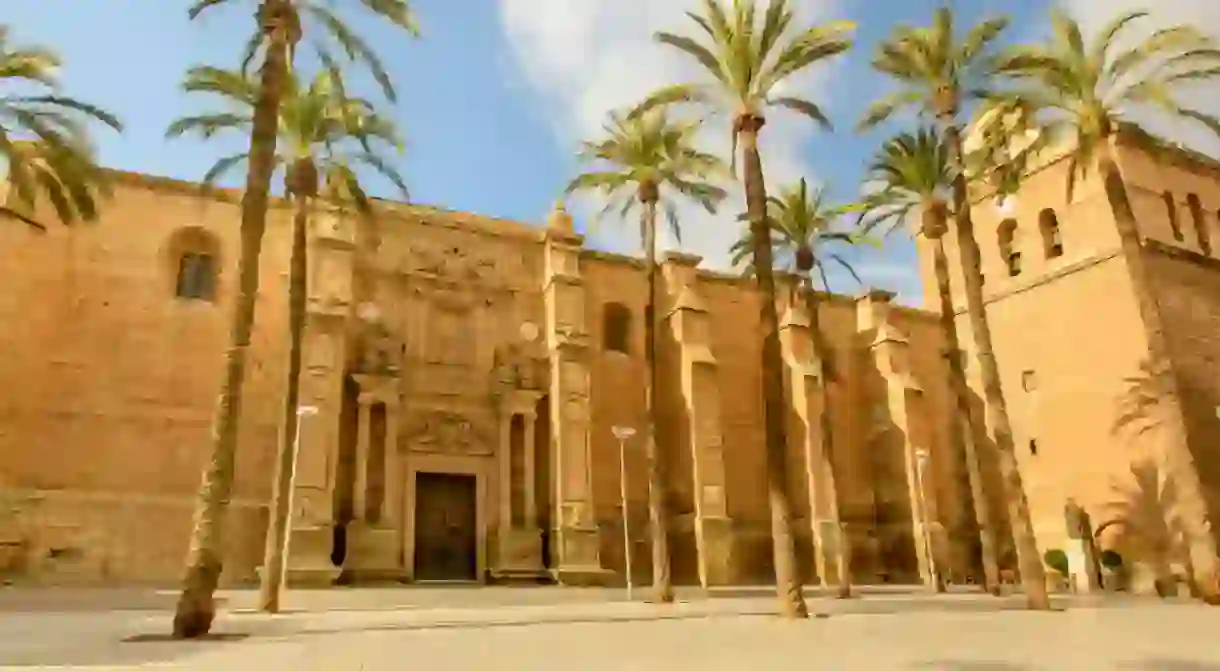The 12 Most Amazing Things to See and Do in Almería, Spain

In the shadow of the imposing Alcazaba fortress, Almería is far less crowded than neighbouring Andalusian cities – but still packs a punch with its Gothic cathedral, ancient baths and tapas restaurants. Here are the most diverting attractions in this southern Spanish city.
Almería, capital of the easternmost part of Andalusia, is the only city in Europe with a hot desert climate – perhaps not that surprising, given that it neighbours the continent’s only actual desert. Here’s our pick of the top things to see and do in a city often overshadowed by Andalusia’s Big Four (Granada, Málaga, Seville and Córdoba), including a visit to the only defensive cathedral in southern Spain and kayaking off the country’s largest volcanic rock formation.
Visit the Alcazaba
Mosque

Marvel at the Cathedral of Almería
Cathedral, Church

Soak inside the Aire de Almería
Spa, Historical Landmark
Shop on the Calle de las Tiendas
Architectural Landmark
The “shopping street” branches off the northern end of the Paseo de Almería in the Old Town. In addition to its modern clothing and shoe outlets, two of its most venerable tenants are still standing – El Valenciano, an eye-catching curiosity and souvenir shop founded in the 19th century, and Amalia, a kiosk-sized bar with a small terrace. Its speciality tipple is the Americano, a concoction of hot milk, sugar and kola nut liquor, named after the American actors who are said to have requested it while filming here in the 1960s.
Sunbathe on Levante beaches
Natural Feature

Almería’s Levante coastline takes its name from the strong winds that frequently buffet Spain’s southern coast. It is home to some of the region’s most unspoilt beaches. They’re scattered throughout the provinces of Pulpí, Cuevas del Almanzora, Garrucha, Mojácar and Carboneras (from north to south). Most are coves of fine sand flanked by dramatic cliffs, often served by a sole chiringuito (a bar selling drinks and tapas). Playa Carolina, Playa Pozo del Esparto and Playa de las Ventanicas are among the best. If you prefer lesser-trodden beaches are are willing to give up on facilities to get them, we recommend Playa de los Muertos (Beach of the Dead) which, despite its macabre name, is one of the most stunning beaches on Spain’s Mediterranean coast. Playa de los Genoveses is another of the Cabo de Gata’s star beaches and offers pristine sand and wonderful swimming.
Peruse photography at the Centro Andaluz de Fotografía
Museum
In a 16th-century building that once housed Almería’s Lyceum, the Andalusian Centre of Photography showcases works by leading Spanish and international artists. It was founded in 1992, in order to continue the legacy of Almería’s Imagina project. Launched in 1900, during celebrations of the fifth centenary of Europeans’ landing in the Americas, this pioneering initiative saw some of the world’s finest photographers showcasing their work in the city.
Drive to the Tabernas Desert
Natural Feature

Tuck into tapas at Jovellanos 16
Restaurant, Spanish
Even on a street lined with tapas joints, this one manages to stand out. With every beer, wine or soft drink you order, you’re entitled to a free tapa of your choice, but you can also request extra dishes for a small charge. The menu consists of Spanish staples such as croquetas and pinchos (mini skewers of pork or chicken), some contemporary presentations of tuna and octopus and plenty of veggie options. There’s not much space, so arrive early to secure a table.
Go kayaking in Cabo de Gata
Park

Civil War Tunnels
Historical Landmark
Wild West film sets
Historical Landmark

If you’ve made the journey out to Tabernas, you’d be a fool to miss out on some cinematic adventure. During the 1960s and 70s, the desert-like terrain of Almeria province became a sought-after filming spot. Many of the decades’ best-known films were shot in the area, including the Sergio Leone westerns that have become classics of their genre. Today, you can visit three of the Wild West film sets that were built during this time: Mini Hollywood, Fort Bravo and Western Leone (no prizes for guessing who the last one was named after).
The Almeria Museum
Museum
History buffs visiting Almeria will want to check out the Museo de Almeria. One of the city’s best museums, its focus is on the Copper and Bronze ages and it has a number of important pieces from those periods. These are spread out over three floors surrounding the impressive 13-metre (43 foot) tall Stratigraphic Column, which shows layers of earth representing various stages of the city’s long history.













